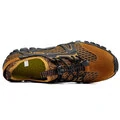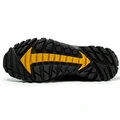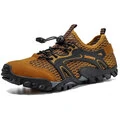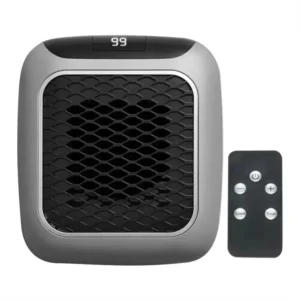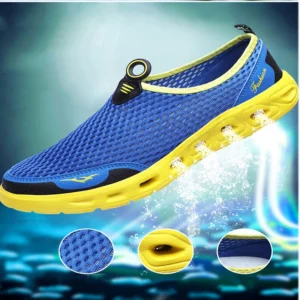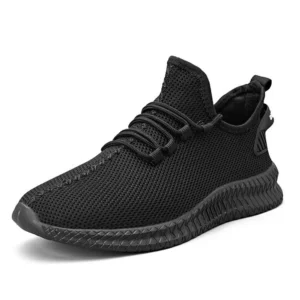Description
Features of Men’s Outdoor Mountaineering Shoes
Men’s outdoor mountaineering shoes are engineered to offer exceptional performance in challenging conditions, ensuring that hikers and climbers can pursue their adventures safely and effectively. One of the primary attributes of these shoes is the incorporation of hollow mesh surfaces that enhance breathability. This feature allows moisture and heat to escape, keeping the feet comfortable during long hikes or climbs. The design counteracts sweat accumulation, which can lead to discomfort or blisters and is crucial for maintaining stamina when engaged in rigorous outdoor activities.
Durability and weather resistance are also key aspects of quality mountaineering footwear. These shoes are often constructed from high-performance materials such as Gore-Tex, synthetic fabrics, or rugged leather. These materials not only resist abrasions and punctures but also protect against elements like rain, snow, and rough terrain. This ensures that the footwear can withstand the rigors of outdoor adventures while keeping the feet dry and protected.
Support and traction are essential for navigating uneven landscapes, making it imperative for mountaineering shoes to have well-designed soles and structural features. The soles are typically made from advanced rubber compounds that provide excellent grip on various surfaces, from rocky trails to muddy paths. Features like a reinforced toe cap and heel counter give additional support, helping to minimize the risk of injuries during challenging climbs.
Furthermore, comfort is paramount for those embarking on extended trips. Quality mountaineering shoes often include generous padding around the ankles and a snug fit that reduces movement within the shoe, preventing blisters and enhancing overall performance. Advanced insole technology also contributes to shock absorption and energy return, enabling climbers and hikers to maintain their focus and energy levels throughout their excursions.
Choosing the Right Size and Fit: A Size 40 Guide
Selecting the appropriate size and fit for men’s outdoor mountaineering shoes is crucial in ensuring comfort and preventing injuries during outdoor activities. For those considering size 40 in European sizing, it is essential to recognize that a proper fit involves more than just the numerical designation. A meticulously fitting shoe promotes not only better performance on rugged terrains but also contributes to foot health over extended periods of wear.
To accurately measure foot size, it is advisable to do so at the end of the day when your feet are likely to be slightly swollen. Start by positioning your foot on a piece of paper, ensuring that your heel is flush against the wall. Mark the longest point of your toes on the paper. Next, measure the distance between the marks using a ruler. This measurement, in centimeters, should be compared with sizing charts specific to the footwear brand, as sizes may vary slightly between manufacturers.
When trying on shoes, it is recommended to wear the type of socks intended for use during mountaineering, as sock thickness will affect the overall fit of the shoe. Ensure there is enough room at the toe box; your toes should comfortably wiggle without being cramped. Additionally, pay attention to the heel fit; your heel should not slip out of the shoe when you walk. This snug fit is vital for maintaining proper alignment during climbing or hiking.
Another consideration is the individual shape of your foot. Factors such as arch height and foot width can significantly influence comfort. Brands often cater to various foot shapes, offering options that either accommodate wider or narrower feet. Investing time in selecting the right size 40 mountaineering shoes will ultimately enhance your outdoor experience, making it more enjoyable and safer.

